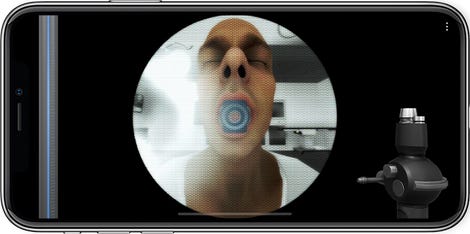The Polaris Dawn mission will launch no earlier than March 2023. Image: Polaris Program/John Kraus.
The Polaris Dawn spaceflight, a SpaceX mission slated for launch in March, will be a pioneering mission. Its crew will attempt the very first commercial spacewalk. It will also be the first crew to test Starlink laser communications in space. If all goes as planned, the mission will set a new record for the highest Earth orbit ever achieved.
The crew will conduct dozens of scientific experiments and research to study the effects of spaceflight and space radiation on the human body.
However, of the private space mission’s four crew members, only one has specialized expertise in human biology and medical care: Anna Menon, SpaceX’s senior space operations engineer, who worked for seven years at NASA as a biomedical flight controller for the International Space Station (ISS).
How to prepare a crew to use medical tools and perform diagnostics on their own
This lack of expertise presented SpaceX with a unique challenge: how to prepare a crew, with limited training time, to use medical tools and perform diagnostics on their own – and do it in space, without assistance, and in a place where the environment is obviously completely different from that of Earth?
The answer: video games.
SpaceX has partnered with Level Ex, a company founded seven years ago, to train the crew of Polaris Dawn to perform ultrasound medical procedures. Level Ex uses real-time simulation technology to gamify medical education, all on downloadable apps on a phone.
Level Ex’s mission – founder and CEO Sam Glassenberg explained to ZDNET – is “to advance the practice of medicine through play”. The company is “accelerating the adoption curve for new treatments and devices by using video game technology and design,” he says. “Spatial health is only a local extension. »
“Your heart physically changes shape – it becomes more spherical in microgravity – and your blood flow changes direction”
Level Ex already has three million gamers using its games, including more than one million medical professionals, according to Sam Glassenberg. Its range of games is designed for specialists such as cardiologists and pulmonologists. In Gastro Ex, for example, doctors can practice performing gastrointestinal procedures with different endoscopic tools in seemingly real anatomy, but in virtual reality. Airway Ex, meanwhile, allows doctors to practice intubating virtual patients in realistic operating rooms.

Screenshot from a Level Ex game, showing a virtual rendering of a patient opening his mouth. Image: Level Ex.
The company also works with life science device manufacturers to accelerate the learning and adoption of their technologies.
Medical training simulations are a big hit with healthcare professionals because they represent a huge step up from the alternative of learning to perform new procedures or use new tools on real patients. This same logic clearly applies to the training of astronauts, who simply don’t have time for full medical training. Astronauts train for years to participate in a week-long space mission. With so much to learn, “we don’t have time to give everyone a medical degree in space health,” says Sam Glassenberg.
Also, practice on Earth will not replicate conditions in space, anyway. “Your heart physically changes shape — it becomes more spherical in microgravity — and your blood flow changes direction,” he notes. “So how do you know if what you’re looking at is normal?” »
“Doctors also play video games”
In 2019, Level Ex received a grant from NASA to create the most realistic real-time ultrasound simulation ever, to provide what is called “just-in-time” training for astronauts. NASA has tapped the video game company for its possible missions to Mars.
“Imagine that you have been on a mission to Mars for nine months,” says Sam Glassenberg. “Suddenly, one of the astronauts grabbed his chest in microgravity and passed out. What if it was the flight doctor? »
On a mission this far from Earth, the astronauts on board would not be able to call the mission control center for assistance. They would also find themselves in a resource-limited environment, where ultrasound is the only medical imaging technology available.
Building on work begun with NASA, Level Ex then partnered with SpaceX and others to develop just-in-time training and an in-flight procedures guide to help aircrew use ultrasound. During the Polaris Dawn mission, the crew will track their blood circulation patterns and measure just-in-time training effectiveness, with the ultimate goal of preparing future space travelers to monitor their health during missions. long term.
“They are trying to prepare for living in space,” argues Sam Glassenberg.
While Level Ex’s games are designed for mobile devices, their graphics are on par with console games. “You won’t find fluid dynamics and the things we do in mobile games,” Sam Glassenberg says.
Before creating Level Ex, Sam Glassenberg was involved in the creation of realistic video games at Microsoft and LucasArts. He developed the first Level Ex game as a favor to his father, a doctor looking for better fiber optic intubation simulations.
It was “surprisingly easy” to convince doctors to use game-based training apps, he says. “At first we were nervous about adopting the branding of the games, but we found that it resonated. Doctors also play video games. »
Source: ZDNet.com
